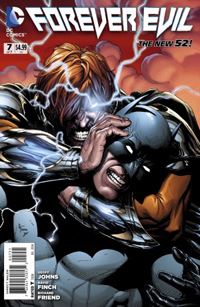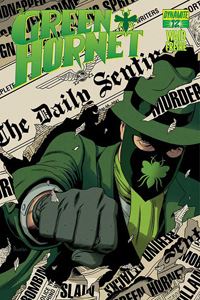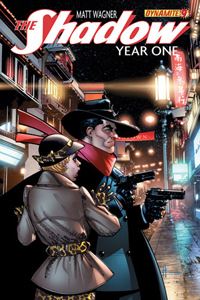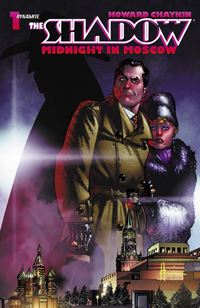Reaching Conclusions
By Philip Schweier
May 22, 2014 - 14:31
 |
For several weeks, my pull list has been rather sparse, consisting of one or two isolated issues of the title I regularly buy. This week I came home with five, due largely to the release of the final chapter of Forever Evil, as well as the accompanying storylines in that have been running in Justice League and Justice League of America.
After nine months, I can now sit down and enjoy this epic DC Comics event.
Y’see, years ago, just prior to the fall of the Soviet Union, a small comics publisher released a three-issue mini-series over the course of 18 months. Six months after #1, #2 was released, and #3 a year after that. At the time, I blamed the writer/artist for the delay, as well as the publisher for not insisting that all three chapters be completed and ready to print before scheduling the series for publication.
Now, I know differently. In my professional career in publishing, I have learned how smaller companies often exist on a hand-to-mouth basis, sometimes accumulating significant debt with their printers. And then there’s distribution costs to cover. In fairness, it may be no single person at fault for the 18-month publishing schedule.
Some people might suggest I should just wait for it to be published in trade paperback form, but here’s the flaw in that: if too many people wait for the trade, then single issue sales suffer. And if there’s not enough demand for the single issues, then the publisher has no incentive to publish the trade.
 |
And even with a series that is considered a classic, I sometimes would rather have the original issues, if it’s not cost-prohibitive. Many of those comics from the 1960s, ‘70s and ‘80s feature ads for Aurora model kits, Hostess Fruit Pies and Saturday morning cartoons. I enjoy those, revisiting other aspects of my childhood.
So why was it a bad week for me, despite the opportunity to enjoy Forever Evil? Well, the other two titles I picked up this week were The Shadow: Year One (#9 of 10) and the Green Hornet (#12 of 13). With those series about to wind up, I will have several more hours of comic book reading to enjoy in the weeks to come.
 |
I read like it’s a second job, devouring novels in my spare time. If I exercised like I read, I’d be Mr. Universe.
I am steadily working my way through the original Shadow pulp stories, the Doc Savage series, a couple dozen Sherlock Holmes novels, as well as books by Max Allan Collins, Cherie Priest, Clive Cussler and Lee Child. I hope to have them completed before I die.
As I mentioned to my brother recently, since so many of the comic book title I’m reading are ending, such as The Shadow Now and The Shadow: Year One, maybe I should give up comics altogether
Naaaah.
 |
Related Articles:
Black Pulp Volume Two Announced
The Rocketeer/The Spirit: Pulp Friction #1 comics review
Sequential Pulp Comics to Adapt ‘Jungle Tales of Tarzan’
Video Killed the Radio (and Pulp) Stars
PULPED! The Official New Pulp Podcast-Episode 1-PULPED! For The First Time!
Runemaster Studios Announces Pulp Division
Pulps' greatest heroes "Battle For L.A." in graphic novel from Moonstone!
New Kolchak, new Pulp: Oct '10 releases!
Sequential Pulp Comics
Pulp Culture, Part 4: From Pulps to Comics
